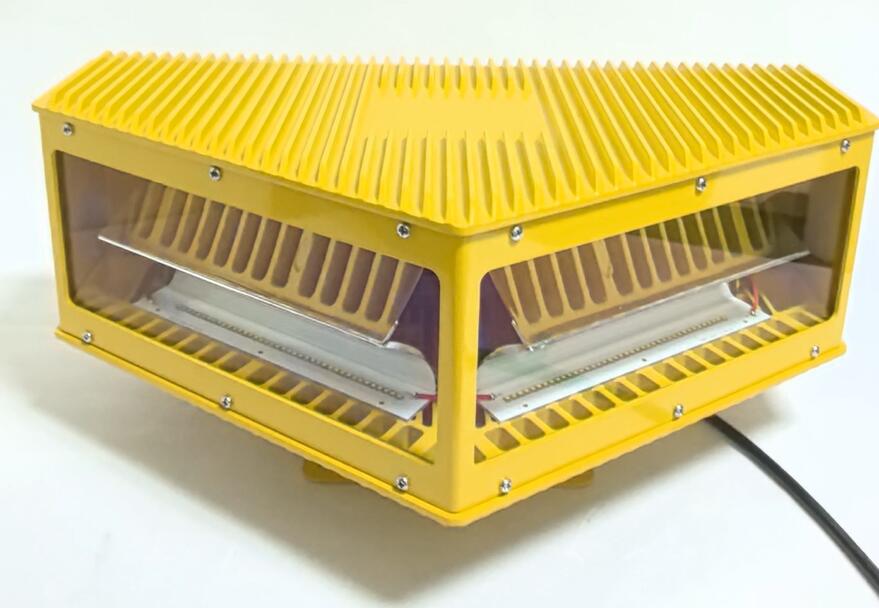LED Aviation Obstruction Lights: The Future of Airspace Safety
As air traffic increases and urban landscapes grow taller, the need for reliable aerial hazard marking has never been greater. LED aviation obstruction lights have revolutionized the industry, offering superior visibility, energy efficiency, and durability compared to traditional lighting systems. This article explores their significance, types, regulatory compliance, and emerging innovations.
Why LED Aviation Obstruction Lights Are Essential
Structures such as skyscrapers, wind turbines, and communication towers pose significant risks to low-flying aircraft. LED aviation obstruction lights serve as critical visual aids, ensuring these hazards are clearly identifiable day and night.

Key Advantages of LED Technology:
Higher Brightness with Lower Power Consumption – LEDs provide intense illumination while using minimal energy.
Longer Lifespan – Lasting up to 100,000 hours, they reduce maintenance frequency.
Instant On/Off Functionality – Unlike traditional bulbs, LEDs activate immediately, crucial for flashing applications.
| LED Aviation Obstruction Lights |
Environmental Resistance – They perform reliably in extreme temperatures, rain, and wind.
Types of LED Aviation Obstruction Lights
Different structures require specific lighting configurations based on height and location.
1. Low-Intensity LED Obstruction Lights (L-810)
Used for structures under 45 meters (148 ft).
Steady red LED lights.
| LED Aviation Obstruction Light |
Common on small buildings, cranes, and power lines.
2. Medium-Intensity LED Obstruction Lights (L-864)
For structures between 45 and 150 meters (492 ft).
Red or white flashing LEDs.
Often installed on telecom towers and wind farms.
3. High-Intensity LED Obstruction Lights (L-865)
Required for structures exceeding 150 meters.
Bright white strobes visible for miles.
Used on skyscrapers, tall chimneys, and broadcasting towers.
4. Dual LED Lighting Systems
Combine red steady lights with white strobes for optimal visibility.
Automatically adjust intensity based on ambient light conditions.
Regulatory Standards and Compliance
Global aviation authorities enforce strict guidelines to ensure obstruction lights meet safety requirements.
Key Regulatory Bodies:
ICAO (International Civil Aviation Organization) – Sets worldwide standards.
FAA (Federal Aviation Administration) – Governs U.S. requirements.
EASA (European Union Aviation Safety Agency) – Oversees European regulations.
Critical Compliance Factors:
Placement – Lights must mark the highest point and intermediate levels of a structure.
Brightness & Flash Patterns – Must adhere to specified candela and synchronization standards.
Weather Resistance – Must function in all environmental conditions.
Technological Advancements in LED Aviation Obstruction Lights
Modern LED systems incorporate cutting-edge features for enhanced performance.
1. Solar-Powered LED Systems
Reduce reliance on electrical grids.
Ideal for remote or off-grid installations.
2. Smart Monitoring & IoT Integration
Real-time fault detection and remote diagnostics.
Automated alerts for maintenance needs.
3. Adaptive Lighting Technology
Adjusts brightness based on surrounding light levels.
Minimizes light pollution while maintaining safety.
4. Wireless Synchronization
Ensures simultaneous flashing across multiple lights.
Improves visibility for pilots.
Applications Beyond Aviation
While primarily used for aerial safety, LED obstruction lights also benefit:
Wind Energy – Marking turbine blades to prevent aircraft collisions.
Maritime Structures – Illuminating offshore platforms and lighthouses.
Urban Infrastructure – Ensuring high-rise buildings are visible to helicopters.
LED aviation obstruction lights represent a significant leap forward in aerial safety technology. Their energy efficiency, durability, and smart capabilities make them indispensable in modern infrastructure. As cities expand and air traffic grows, these lights will continue to play a vital role in preventing accidents and ensuring compliance with global aviation standards.
